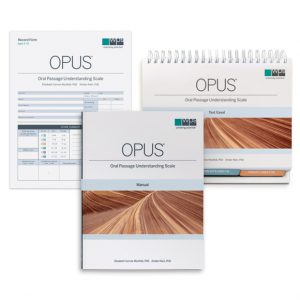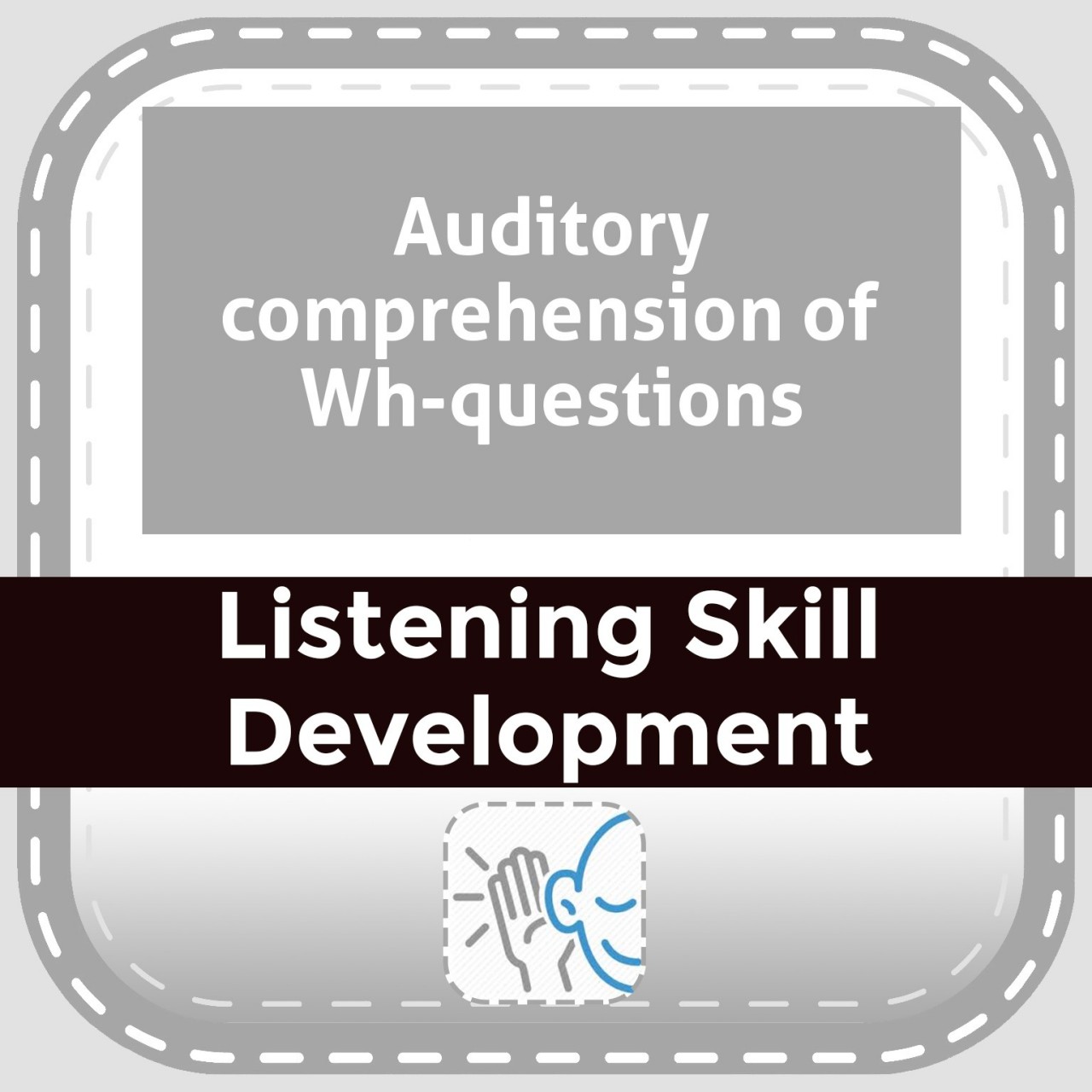Description
The ability to perform a relevant and functional measure of auditory comprehension has been a huge need in the field if education of students who are deaf or hard of hearing. We recognize that the information received by students with hearing loss is incomplete or fragmented. Attention, motivation and language ability all act together, with the fragmented communication received, to determine overall comprehension ability. We were very excited to see this test made available and believe it will become a critical component in determining the level of student access to classroom communication, whether the student is an auditory and/or visual learner.
 The Oral Passage Understanding Scale is a measure of listening (auditory) comprehension for individuals ages 5 to 21 years. It evaluates a person’s ability to listen to passages that are read aloud and recall information about them. This ability is key to success in the classroom and social situations. It also measures memory skills, which are integral to listening comprehension.
The Oral Passage Understanding Scale is a measure of listening (auditory) comprehension for individuals ages 5 to 21 years. It evaluates a person’s ability to listen to passages that are read aloud and recall information about them. This ability is key to success in the classroom and social situations. It also measures memory skills, which are integral to listening comprehension.
OPUS identifies how well a person can integrate and apply knowledge in three structural categories of language:
- Lexical/Semantic: knowledge and use of words and word combinations
- Syntactic: knowledge and use of grammar
- Supralinguistic: knowledge and use of language in which meaning is not directly available from the surface lexical and syntactic information.
Measuring higher-level comprehension skills, including inference and prediction, yields more detailed information beyond simply whether or not the individual can comprehend. These skills require deeper processing abilities.
Applications and Uses
Purchase and administration requires a person who has a BA or MA degree with training and experience in test administration. The OPUS can be used to help to answer a variety of questions. For example:
- What is the student’s level of access to communication in the classroom (communication effectiveness as required by ADA)
- Can a student sufficiently understand and retain information heard in class?
- Are listening difficulties contributing to a child’s social skill challenges?
- Does this student need accommodations to have equal access to information provided verbally in the classroom (i.e. note-taker, captioning, sign language interpreter)?
How it Works:
The OPUS consists of 17 passages, each with 7 to 10 associated questions. These passages are divided into six Item Sets to allow for a brief administration time of just 10 to 20 minutes. Each item set has 5 passages and up to 44 question items. Selecting the appropriate Item Set based on the person’s age and ability, ensures that developmentally appropriate items are administered.
| Item Set | Ages | Passages |
| A | 5 to 6 | 1 to 5 |
| B | 7 to 8 | 4 to 8 |
| D | 9 to 10 | 7 to 11 |
| D | 11 to 13 | 9 to 13 |
| E | 14 to 16 | 11 to 15 |
| F | 17 to 21 | 13 to 17 |
Adaptation for Visual Learners:
Per Supporting Success for Children with Hearing Loss, the OPUS can be administered to the student in his or her preferred mode of visual communication. With this adaptation, normative results must be viewed as an estimate. Results will broadly indicate how the student’s ability to comprehend information that is typical of classroom comprehension expectations. For greatest fidelity, it is important that the person providing the visual communication version of the test stimuli do so in a manner that is as close as possible to the level and completeness of information that is typically provided to the student in the classroom environment. Results of either or both tests can then be used as an estimate of not only what the language level the student is being presented, but also the degree to which the student comprehends the information.
Items Included in the OPUS Kit:
The OPUS Kit includes 10 record forms, easel, manual, and training audio files. The OPUS Form features Item Analysis Worksheets to identify strengths and areas for improvement and to assist in writing IEP goals.
The self-standing OPUS Easel includes the passages, items, scoring criteria, and samples of correct and incorrect responses. The beginning of each Item Set is tabbed to easily find the age set needed.
Upon purchase you will gain access to digital scoring and reporting through the WPS Online Evaluation System (OES) at no additional charge. This gives you the option to score online and automatically generate useful reports, including a Score Report with item analysis, a Progress Report, and a Profile Summary Report. OES lets you securely and conveniently keep a record of your administrations and share helpful information with parents, teachers, and others who support student outcomes.
Standardization is based on a sample of 1517 individuals ages 5-21 years, including those who have hearing loss. A clinical validation sample of 204 individuals demonstrate that the OPUS can differentiate between typically developing individuals and those with the following diagnoses: expressive/receptive language disorder, hearing impairment, auditory spectrum disorder, intellectual disability, social (pragmatic) communication disorder, learning disability, developmental delay. The OPUS has strong internal consistency and test-retest and interrater reliability.
Supporting Success is a reseller of this Western Psychological Services (WPS) publication at a great price!









